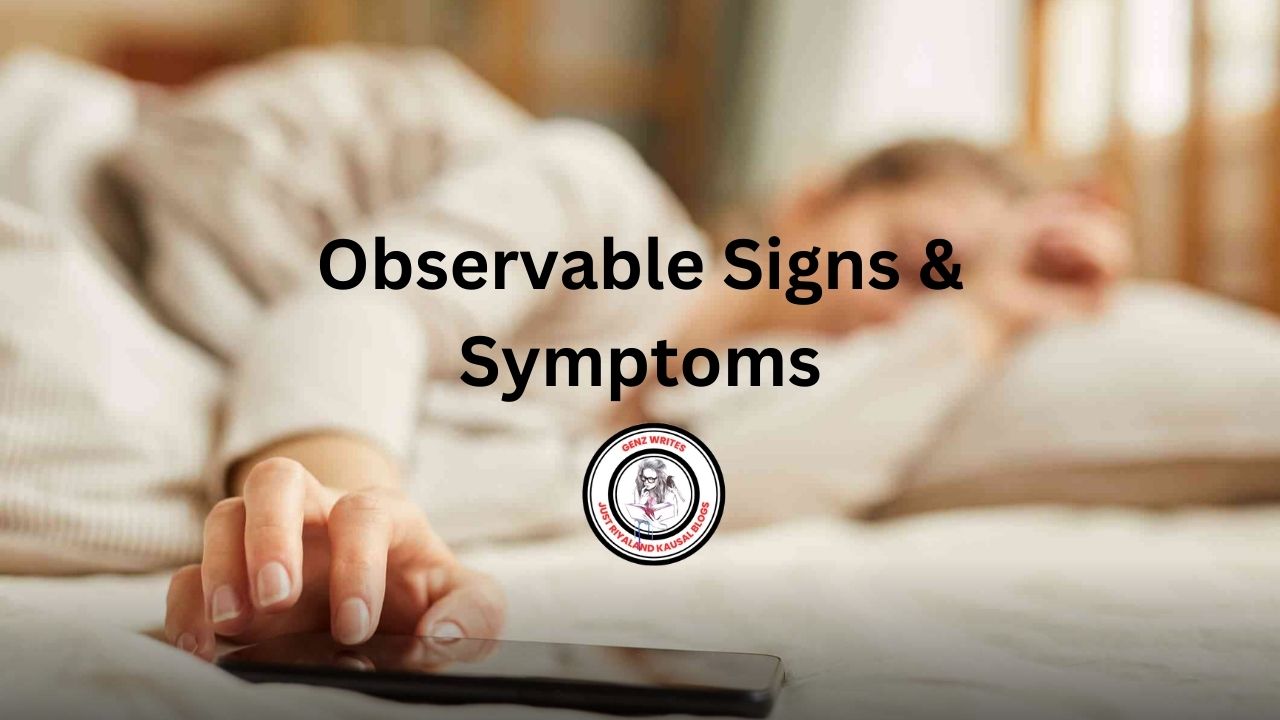Depersonalization/Derealization Disorder is a mental health condition characterized by persistent or recurrent feelings of detachment from one's own body or mind (depersonalization) or one's surroundings (derealization). Individuals with this disorder often describe feeling like an outside observer of their own life. Follow us here at (KLFW) 2024
Diagnostic Criteria

According to the Diagnostic and Statistical Manual of Mental Disorders (DSM-5), the diagnostic criteria for Depersonalization/Derealization Disorder include:
- Persistent or recurrent experiences of depersonalization/derealization, or both.
- During these experiences, reality testing remains intact.
Key Symptoms
Depersonalization
It can involve feelings of unreality, a changed perception of one's body, or a sense of being an automaton.
Derealization
Feeling detached from one's surroundings, as if the world is unreal,
dreamlike, or foggy. It can involve changes in perception of time, space, or other people.

Observable Signs and Symptoms
While the core symptoms of depersonalization and derealization are subjective experiences, there are some observable behaviors and changes that might be noticed by others.
Changes in Behavior
- Withdrawal: Individuals may become socially isolated or withdrawn.
- Flattened affect: Reduced emotional expression or a blank, vacant look.
- Difficulty concentrating: This can manifest in impaired performance at work or school.
- Changes in sleep patterns: Insomnia or excessive sleepiness.
- Irritability or agitation: These may be present due to the distress caused by the disorder.
Observable Signs of Derealization
- Changes in social interaction: Difficulty maintaining eye contact or engaging in conversations.
- Unusual behavior: Strange or repetitive actions, such as staring into space or touching objects excessively.
Prevalence and Demographics
Prevalence
- Determining the exact prevalence of Depersonalization/Derealization Disorder (DPDR) is challenging. Several factors contribute to this, including:
- Underreporting: Many individuals with DPDR may not seek help due to stigma or lack of awareness.
- Difficulty in diagnosis: The symptoms can overlap with other mental health conditions, making diagnosis complex.
That said, estimates suggest:
- General population: Prevalence rates are relatively low, but specific figures vary widely across studies.
- Psychiatric settings: The condition is more commonly diagnosed in clinical settings, particularly among individuals with other mental health disorders.
Demographics
While research on the demographics of DPDR is limited, some general trends have been observed:
- Age of onset: Typically begins in adolescence or young adulthood.
- Gender: While there seems to be no significant gender difference in prevalence, the experience of the disorder may vary between men and women.
- Comorbidity: Often co-occurs with other mental health conditions, such as anxiety
- disorders, depression, and post-traumatic stress disorder (PTSD).
Causes OR Risk Factors
The exact causes of DPDR are not fully understood, but several factors are believed to contribute:
- Trauma: A history of physical, emotional, or sexual abuse can be a significant risk factor.
- Stressful life events: Major life changes or stressful situations can trigger symptoms.
- Substance abuse: Use of certain drugs or alcohol can induce depersonalization or derealization.
- Underlying mental health conditions: DPDR often co-occurs with other mental health disorders, such as anxiety, depression, or PTSD.
- Biological factors: Brain chemistry imbalances may play a role.
Prognostic Factors
Factors that may influence the course and outcome of DPDR include:
- Severity of symptoms: The intensity and duration of symptoms can impact prognosis.
- Comorbid conditions: The presence of other mental health disorders can complicate the treatment process.
- Treatment adherence: Consistent engagement in therapy can improve outcomes.
- Support system: A strong support network can enhance recovery.
- Coping mechanisms: Effective coping strategies can help manage symptoms and improve overall well-being.
Development and Course

Development
The onset of DPDR can vary widely. While it can occur at any age, it often begins in adolescence or early adulthood.
- Acute onset: In some cases, DPDR develops suddenly following a traumatic event, significant stressor, or substance use.
- Gradual onset: In other instances, symptoms may develop gradually over time.
Course
The course of DPDR is also variable.
- Episodic: Some individuals experience recurrent episodes of depersonalization or derealization that may resolve spontaneously.
- Chronic: In other cases, symptoms may persist for months or years, significantly impacting daily life.
- Fluctuating severity: The intensity of symptoms can vary over time, with periods of improvement and worsening.
It's important to note that while DPDR can be a distressing condition, many individuals experience improvement with appropriate treatment and support. However, for some, the disorder may become chronic.
Culture-Related Diagnostic Issues
Culture significantly influences how individuals experience, express, and understand mental health conditions. This is particularly relevant in the context of Depersonalization/Derealization Disorder (DPDR).
Key Cultural Considerations:
- Cultural Explanations of Distress: Different cultures have varying explanations for feelings of detachment or unreality. Some cultures might attribute these experiences to spiritual or supernatural causes.
- Stigma: The stigma associated with mental health conditions, including DPDR, varies across cultures. This can influence the willingness of individuals to seek help or disclose symptoms.
- Somatization: In some cultures, psychological distress might manifest primarily as physical symptoms, which could complicate the diagnosis of DPDR.
Diagnostic Challenges
- Overdiagnosis or Underdiagnosis: Misunderstanding of cultural expressions of distress or biases can lead to either overdiagnosis or underdiagnosis of DPDR.
- Difficulty in Assessment: Accurately assessing DPDR requires a deep understanding of the individual's cultural background and experiences.
- Treatment Challenges: Cultural factors can impact the effectiveness of treatment, as it's essential to consider these factors when developing a treatment plan.
Functional Consequences
DPDR can have a significant impact on various aspects of a person's life. Some common functional consequences include:
- Impaired social functioning: Difficulty maintaining relationships due to feelings of detachment and emotional disconnection.
- Occupational challenges: Difficulties concentrating, making decisions, or completing tasks due to depersonalization or derealization.
- Academic difficulties: Struggling with studies or maintaining good grades due to impaired cognitive function.
- Reduced quality of life: Overall decreased life satisfaction and enjoyment of activities.
- Increased risk of other mental health conditions: DPDR often co-occurs with anxiety, depression, and substance abuse.
- Safety concerns: In severe cases, impaired judgment and perception can lead to safety risks.
Differential Diagnosis
It's crucial to distinguish DPDR from other disorders to ensure accurate diagnosis and appropriate treatment.
- Anxiety disorders: Panic disorder, generalized anxiety disorder, and specific phobias can involve feelings of detachment or unreality.
- Mood disorders: Major depressive disorder and bipolar disorder can present with symptoms of depersonalization or derealization.
- Psychotic disorders: Schizophrenia and other psychotic disorders can involve distorted perceptions of reality, but reality testing is typically impaired in these conditions.
- Substance-induced disorders: Certain drugs or alcohol can induce depersonalization or derealization-like symptoms.
- Neurological conditions: Epilepsy, brain tumors, or head injuries can cause changes in perception.
- Dissociative disorders: Other dissociative disorders, such as dissociative amnesia or dissociative identity disorder, may need to be ruled out.
Comorbidity
DPDR often co-occurs with other mental health conditions. This is referred to as comorbidity. Some common comorbidities include:
- Anxiety disorders: Generalized anxiety disorder, panic disorder, and specific phobias are frequently seen together.
- Mood disorders: Major depressive disorder and bipolar disorder are common comorbidities.
- Post-traumatic stress disorder (PTSD): A history of trauma is often associated with DPDR.
- Substance abuse: Substance use can contribute to the development or worsening of DPDR.
- Personality disorders: Borderline personality disorder and avoidant personality disorder may co-occur.
Self-Help and Management
While professional help is crucial for managing DPDR, there are several self-help strategies that individuals can incorporate into their daily lives.
Self-Care Techniques
- Grounding techniques: Pay attention to what you see, hear, feel, taste, and smell.
- Physical activity: Regular exercise can help reduce stress and improve mood.
- Healthy lifestyle: Prioritize sleep, nutrition, and relaxation.
- Journaling: Expressing your thoughts and feelings can provide emotional relief.
Challenges and Coping Strategies
- Understanding the condition: Educate yourself about DPDR to reduce fear and anxiety.
- Building a support system: Share your experiences with trusted friends or family members.
- Setting realistic goals: Break down tasks into smaller, manageable steps.
- Avoiding triggers: Identify situations or activities that worsen symptoms and try to minimize exposure.
- Challenging negative thoughts: Recognize and challenge unhelpful thinking patterns.
Remember, these self-help strategies can complement professional treatment but should not replace it. If symptoms worsen or interfere significantly with daily life, seeking professional help is essential.